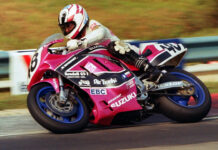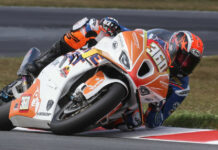HARLEY-DAVIDSON DELIVERS SOLID THIRD QUARTER FINANCIAL RESULTS
MILWAUKEE — Harley-Davidson, Inc. (“Harley-Davidson”) (NYSE: HOG) reported third quarter results [October 27].
“Harley-Davidson delivered a solid third quarter and we have seen many of our Hardwire strategic initiatives perform well, providing encouraging initial proof points of our five-year strategy,” said Jochen Zeitz, chairman, president and CEO, Harley-Davidson. “Our teams continue to work to mitigate the impact of the ongoing supply chain challenges that our sector faces, however our performance underlines that we are on course to deliver our long-term Hardwire strategy.”
Third Quarter 2021 Highlights and Results
GAAP diluted EPS of $1.05, up $0.27 over Q3 2020
Total HDI revenue grew 17 percent behind increased shipments and favorable motorcycle unit mix
Motorcycles and Related Products (Motorcycles) segment operating margin was 8.4 percent, which was 3.6 percentage points better than Q3 2020; driven by unit mix, pricing and reduced restructuring expense offsetting the cost increases across the supply chain and the impact of EU tariffs
Financial Services segment operating income growth of $15 million over Q3 2020 driven by lower interest expense
Launched Sportster® S, the all-new Sportster motorcycle built on the Revolution® Max platform
Third Quarter 2021 Results
Q3 consolidated revenue was up 17 percent versus Q3 2020 driven by growth in the Motorcycles segment thanks to stronger unit sales and a favorable unit mix. Total net income growth of 36 percent was driven by growth across both the Motorcycles and the Financial Services segments.
Revenue from the Motorcycles segment was up significantly during the third quarter of 2021 primarily driven by a 12 percent increase in wholesale shipments, favorable motorcycle unit mix and pricing. Parts & Accessories third quarter revenue was down slightly while General Merchandise was flat to Q3 2020 as both businesses faced strong prior year Q3 comparisons as dealers reopened after pandemic-related closures.
Third quarter gross margin was down 3 percentage points to Q3 prior year as a margin benefit attributed from stronger volume, profitable mix and pricing was more than offset by the negative cost headwinds across the supply chain and higher EU tariffs (2.5 percentage point impact). Q3 operating margin finished up versus prior year as the company’s comparison period included heavier Rewire restructuring charges.
Global retail motorcycle sales in the third quarter (down 6 percent to prior year) were impacted by the strategic decisions made as part of the Rewire strategy, including the exit of unprofitable product segments and markets, as well as, macro supply chain challenges, including slower shipping times to the international markets.
Q3 North America retail performance was up over last year, offset by declines across international markets.
Financial Services segment operating income was up over prior year in the third quarter, primarily driven by lower interest expense.
Other Results
Harley-Davidson generated $926 million of cash from operating activities year-to-date in 2021. Cash and cash equivalents were $2.1 billion at the end of the third quarter, down $1.5 billion to the end of Q3 2020 as the company has brought down cash balances.
Tax Rate – The company’s year-to-date effective tax rate was 23 percent.
Dividends – The company paid cash dividends of $0.15 per share in Q3 2021.
Outlook
For the full-year 2021, the company now expects:
Financial Services segment operating income growth of 95 to 105 percent, an increase from the previously communicated range of 75 to 85 percent.
Capital expenditures of $135 million to $150 million, a decrease from the previously communicated range of $190 million to $225 million.
Additionally, our full-year 2021 Motorcycles segment guidance remains unchanged relative to prior guidance. The company continues to expect:
Motorcycles segment revenue growth to be 30 to 35 percent.
GAAP Motorcycles segment operating income margin of 6 to 8 percent given the EU’s decision to keep the current tariff at 31 percent while tariff negotiations occur.
Cash allocation priorities remain to first fund growth through The Hardwire initiatives, then to pay dividends, and the company may also choose to execute discretionary share repurchases.
Company Background
Harley-Davidson, Inc. is the parent company of Harley-Davidson Motor Company and Harley-Davidson Financial Services. Our vision: Building our legend and leading our industry through innovation, evolution and emotion. Our mission: More than building machines, we stand for the timeless pursuit of adventure. Freedom for the soul. Our ambition is to maintain our place as the most desirable motorcycle brand in the world. Since 1903, Harley-Davidson has defined motorcycle culture by delivering a motorcycle lifestyle with distinctive and customizable motorcycles, experiences, motorcycle accessories, riding gear and apparel. Harley-Davidson Financial Services provides financing, insurance and other programs to help get riders on the road. www.harley-davidson.com.
Non-GAAP Disclosure
This press release includes financial measures that have not been calculated in accordance with U.S. generally accepted accounting principles (GAAP) and are therefore referred to as non-GAAP financial measures. The non-GAAP measures described below are intended to be considered by users as supplemental information to the equivalent GAAP measures, to aid investors in better understanding the company’s financial results. The company believes that these non-GAAP measures provide useful perspective on underlying business results and trends, and a means to assess period-over-period results. These non-GAAP measures should not be considered as a substitute for, or superior to, measures of financial performance prepared in accordance with GAAP. These non-GAAP measures may not be the same as similarly titled measures used by other companies due to possible differences in method and in items or events being adjusted.
The non-GAAP measures included in this press release are adjusted net income and adjusted diluted EPS. These non-GAAP measures exclude restructuring plan costs and the impact of European Union (EU) tariffs. Restructuring plan costs include restructuring expenses as presented in the consolidated statements of operations. The impact of EU tariffs includes incremental EU tariffs imposed beginning in 2018 on the company’s products shipped from the U.S. and, beginning in 2021, on the company’s products shipped from Thailand. These non-GAAP measures, as well as a reconciliation of the comparable GAAP measure to these non-GAAP measures, are included later in this press release.
Cautionary Note Regarding Forward-Looking Statements
The company intends that certain matters discussed in this press release are “forward-looking statements” intended to qualify for the safe harbor from liability established by the Private Securities Litigation Reform Act of 1995. These forward-looking statements can generally be identified as such because the context of the statement will include words such as the company “believes,” “anticipates,” “expects,” “plans,” “may,” “will,” “estimates,” “targets,” “intends,” “forecasts,” “sees,” or words of similar meaning. Similarly, statements that describe or refer to future expectations, future plans, strategies, objectives, outlooks, targets, guidance, commitments, or goals are also forward-looking statements. Such forward-looking statements are subject to certain risks and uncertainties that could cause actual results to differ materially, unfavorably or favorably, from those anticipated as of the date of this press release. Certain of such risks and uncertainties are described below. Shareholders, potential investors, and other readers are urged to consider these factors in evaluating the forward-looking statements and are cautioned not to place undue reliance on such forward-looking statements. The forward-looking statements included in this press release are only made as of the date of this press release, and the company disclaims any obligation to publicly update such forward-looking statements to reflect subsequent events or circumstances.
Important factors that could affect future results and cause those results to differ materially from those expressed in the forward-looking statements include, among others, the following: (i) the COVID-19 pandemic, including the length and severity of the pandemic across the globe and the pace of recovery following the pandemic; and (ii) the company’s ability to: (A) execute its business plans and strategies, including The Hardwire and the evolution of LiveWire as a standalone brand, successfully execute its remodeled approach to supply and inventory management, and strengthen its existing business while allowing for desirable growth; (B) mitigate the impact of the revocation of the Binding Origin Information (“BOI”) decisions that allowed the company to supply its European Union market with certain of its motorcycles produced at its Thailand operations at a reduced tariff rate and favorably resolve risks and uncertainties related to the revocation of the BOI decisions including, among other: (1) uncertainties regarding the quantity and mix of motorcycles that the company imports into the EU; (2) whether the company will be granted temporary relief from the effect of the revocation of the BOI decisions; (3) whether the company will be successful in appealing the revocation of the BOI decisions; (4) uncertainties regarding the size and duration of the EU tariffs; and (5) whether and to what extent the company determines to attempt to pass on the impact of the revocation to dealers and its success in doing so; (C) manage supply chain and logistics issues, including quality issues, unexpected interruptions or price increases caused by supplier volatility, raw material shortages or natural disasters, and longer shipping times and increased logistics costs, including by successfully implementing pricing surcharges; (D) invest in electric vehicle (“EV”) technology required to lead the transformation of motorcycling and leverage its engineering expertise, manufacturing footprint, supply chain infrastructure, and global logistics capabilities in the EV sector (E) accurately analyze, predict and react to changing market conditions and successfully adjust to shifting global consumer needs and interests; (F) successfully access the capital and/or credit markets on terms that are acceptable to the company and within its expectations; (G) successfully carry out its global manufacturing and assembly operations; (H) develop and introduce products, services and experiences on a timely basis that the market accepts, that enable the company to generate desired sales levels and that provide the desired financial returns, including successfully implementing and executing plans to strengthen and grow its leadership position in Grand America Touring, large Cruiser and Trike, and growing its complementary businesses; (I) perform in a manner that enables the company to benefit from market opportunities while competing against existing and new competitors; (J) prevent, detect, and remediate any issues with its motorcycles or any issues associated with the manufacturing processes to avoid delays in new model launches, recall campaigns, regulatory agency investigations, increased warranty costs or litigation and adverse effects on its reputation and brand strength, and carry out any product programs or recalls within expected costs and timing; (K) manage the impact that prices for and supply of used motorcycles may have on its business, including on retail sales of new motorcycles; (L) realize expectations concerning market demand for electric models, which will depend in part on the building of necessary infrastructure; (M) successfully manage and reduce costs throughout the business; (N) manage through changes in general economic and business conditions, including changing capital, credit and retail markets, and the changing political environment; (O) continue to develop the capabilities of its distributors and dealers, effectively implement changes relating to its dealers and distribution methods and manage the risks that its independent dealers may have difficulty obtaining capital and managing through changing economic conditions and consumer demand; (P) continue to develop and maintain a productive relationship with Zhejiang Qianjiang Motorcycle Co., Ltd. and launch related products in a timely manner; (Q) maintain a productive relationship with Hero MotoCorp as a distributor and licensee of the Harley-Davidson brand name in India; (R) manage and predict the impact that new or adjusted tariffs may have on the company’s ability to sell products internationally, and the cost of raw materials and components; (S) successfully maintain a manner in which to sell motorcycles in China and the company’s ASEAN countries that does not subject its motorcycles to incremental tariffs; (T) manage its Thailand corporate and manufacturing operation in a manner that allows the company to avail itself of preferential free trade agreements and duty rates, and sufficiently lower prices of its motorcycles in certain markets; (U) accurately estimate and adjust to fluctuations in foreign currency exchange rates, interest rates and commodity prices; (V) retain and attract talented employees, and eliminate personnel duplication, inefficiencies and complexity throughout the organization; (W) prevent a cybersecurity breach involving consumer, employee, dealer, supplier, or company data and respond to evolving regulatory requirements regarding data security; (X) manage the credit quality, the loan servicing and collection activities, and the recovery rates of HDFS’ loan portfolio; (Y) adjust to tax reform, healthcare inflation and reform and pension reform, and successfully estimate the impact of any such reform on the company’s business; (Z) manage through the effects inconsistent and unpredictable weather patterns may have on retail sales of motorcycles; (AA) implement and manage enterprise-wide information technology systems, including systems at its manufacturing facilities; (BB) manage changes and prepare for requirements in legislative and regulatory environments for its products, services and operations; (CC) manage its exposure to product liability claims and commercial or contractual disputes; (DD) continue to manage the relationships and agreements that the company has with its labor unions to help drive long-term competitiveness; (EE) achieve anticipated results with respect to the company’s recently launched pre-owned motorcycle program, Harley-Davidson Certified, and the company’s H-D1 Marketplace; and (FF) accurately predict the margins of its Motorcycles and Related Products segment in light of, among other things, tariffs, the cost associated with product development initiatives and the company’s complex global supply chain.
The company’s operations, demand for its products, and its liquidity could be adversely impacted by work stoppages, facility closures, strikes, natural causes, widespread infectious disease, terrorism, or other factors. Other factors are described in risk factors that the company has disclosed in documents previously filed with the Securities and Exchange Commission. Many of these risk factors are impacted by the current changing capital, credit and retail markets and the company’s ability to manage through inconsistent economic conditions.
The company’s ability to sell its motorcycles and related products and services and to meet its financial expectations also depends on the ability of the company’s independent dealers to sell its motorcycles and related products and services to retail customers. The company depends on the capability and financial capacity of its independent dealers to develop and implement effective retail sales plans to create demand for the motorcycles and related products and services they purchase from the company. In addition, the company’s independent dealers and distributors may experience difficulties in operating their businesses and selling Harley-Davidson motorcycles and related products and services as a result of weather, economic conditions, the impact of COVID-19, or other factors.
In recent years, HDFS has experienced historically low levels of retail credit losses, but there is no assurance that this will continue. The company believes that HDFS’ retail credit losses may increase over time due to changing consumer credit behavior, HDFS’ efforts to increase prudently structured loan approvals to sub-prime borrowers and the favorable impact of recent federal stimulus payments, as well as actions that the company has taken and could take that impact motorcycle values. Refer to “Risk Factors” under Item 1A of the company’s Annual Report on Form 10-K for the year ended December 31, 2020 filed with the SEC on February 23, 2021 and Part II, Item 1A of any subsequently filed Quarterly Report on Form 10-Q, for a discussion of additional risk factors and a more complete discussion of some of the cautionary statements noted above.







